Road to Mt. Narabara
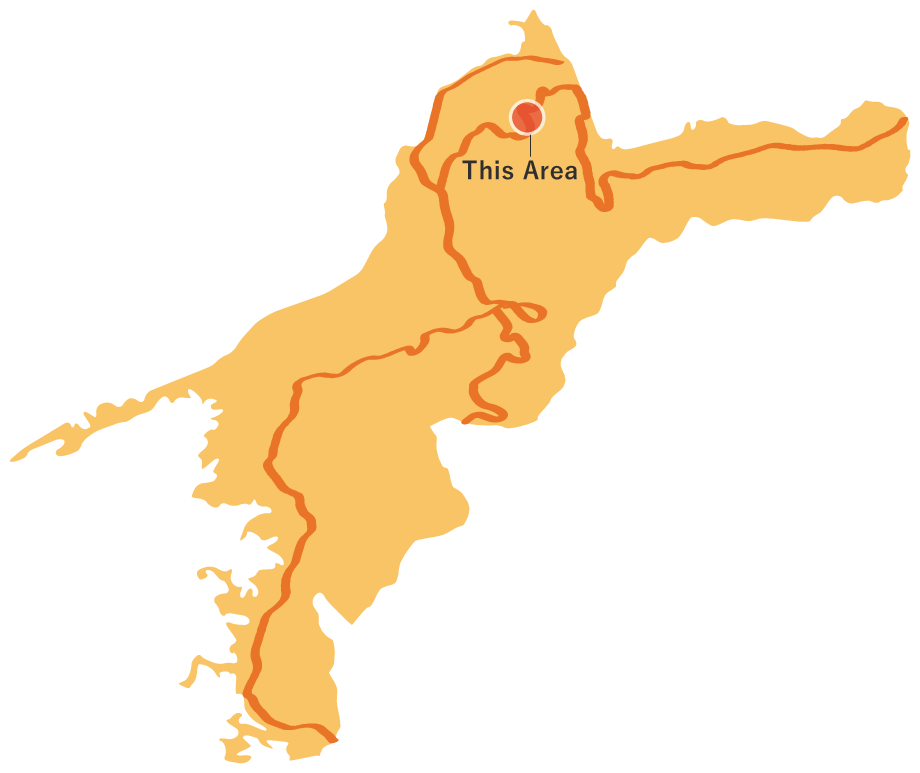
Road to Mt. Narabara
This 9.4 km route heads to Mt. Narabara, located at an altitude of 1,041 m in the central part of the Takanawa Mountains, between the main Soja River and its tributary, the Kiji River. Mt. Narabara is famous for the legend of Emperor Choukei and is revered as the God of horses and cattle. It has also been selected as one of the 100 Famous Mountains in Shikoku. You can also hear birds chirping in the quiet natural woodlands, and the Komochisugi cedar tree is a sight to behold. This gives you a great opportunity to visit the Narabara Shrine. Prepare well when you take this route as this is a steep mountain path with an altitude difference of about 600 m to the summit, and there is no place to refill on water or food along the way.
Road to Mt. Narabara(9.4km)

 Spots to photograph
Spots to photograph
If you wish to receive a certificate, please take a photo that includes yourself at the designated photo point for each course.
Nearby sightseeing spots

-
1
 Starting point: Kiji
Starting point: KijiThis is the starting point, and there is an information board and a check dam here that serve as landmarks. From here, head about 400 m upstream on the Imabari City Road. This Imabari City Road was a national highway until the Mizugatoge Tunnel was opened in Heisei 9 (1997).
-
2
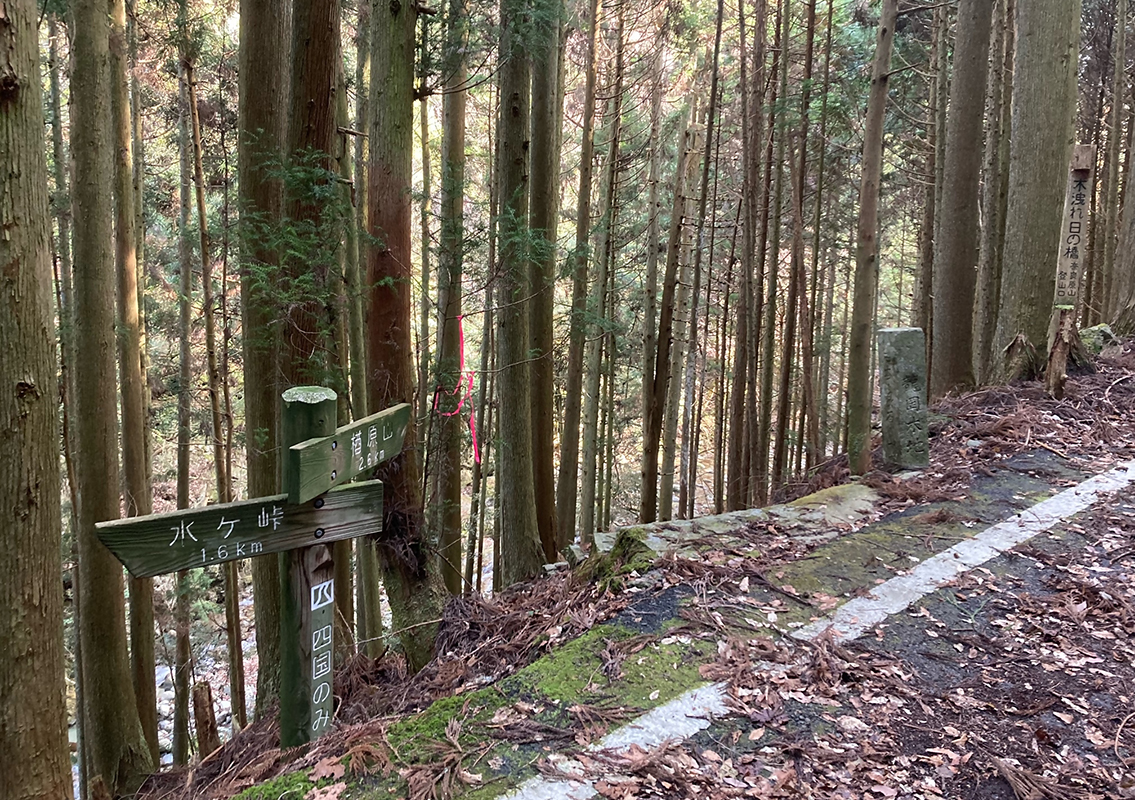 Ryuuoka Kiji Mountain Trail
Ryuuoka Kiji Mountain TrailThis route heads to the summit of Mt. Narabara. If you look at the river through the gaps in the trees, you will notice the small bridge that you have to cross. Follow the sign, climb down once, cross the bridge that you see, and cross the Soja River. Please keep in mind that it is easy to miss this sign at the start of the mountain trail. Please be cautious as you are likely to be distracted by the bridge for vehicles a little further upstream. You will have gone too far if you cross that bridge.
-
3
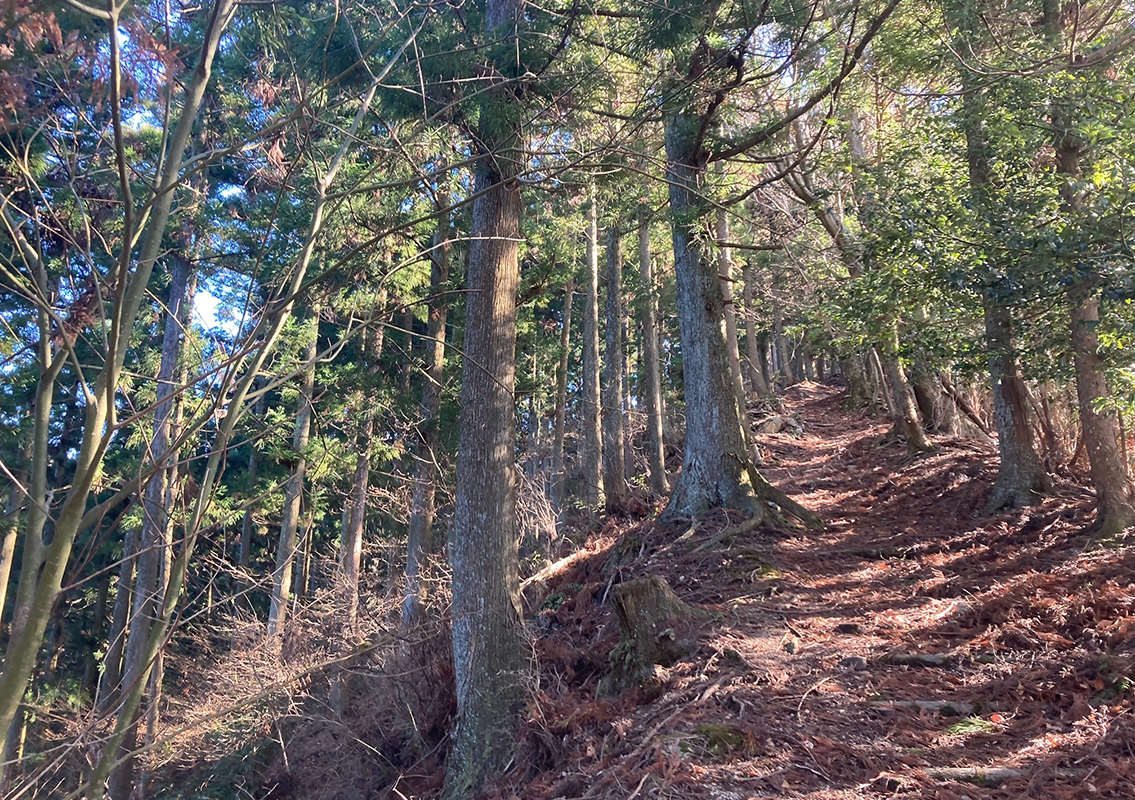 Mountain Trail (Kiji side)
Mountain Trail (Kiji side)The whole area is designated as the Okudogo Tamagawa Prefectural Natural Park. Well-maintained stairs will lead you through the carefully thinned forest. As you approach the top of the mountain, you will see many large trees such as beech, cedar, fir, hemlock, pterostyrax, and maple. On occasion, you may also hear the sound of woodpeckers coming from the tranquil natural forest. Although the mountain trail on the Kiji side has well-maintained stairs, they may become slippery when they are covered with fallen leaves, so please be careful.
-
4
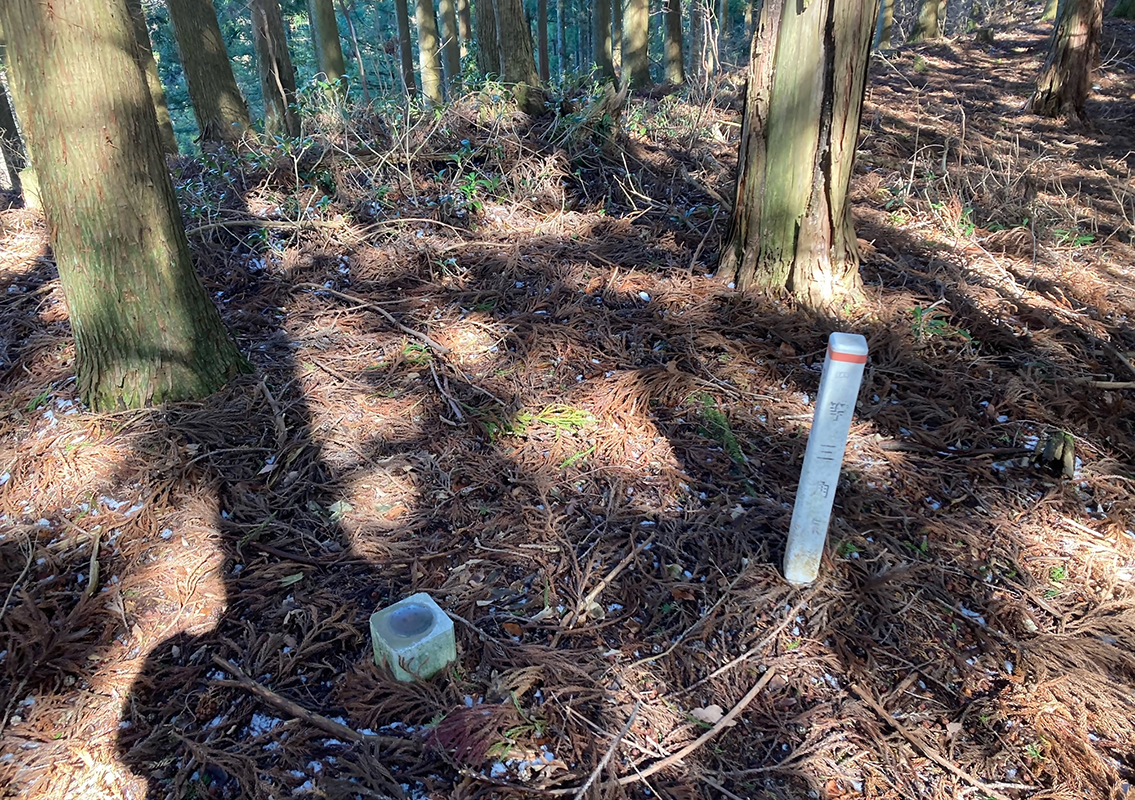 Triangular Station
Triangular StationAs you climb up the mountain trail, you will see small Jizo-san statues along the path, and a little further away from there is a fourth triangulation station in the forest at an altitude of 783.3 m.
-
5
 Komochisugi Cedar
Komochisugi CedarJust before the summit, there is a 400-year-old, 8-meter-tall giant tree at eye level called "Second Generation Komochisugi Cedar," which is designated as a natural monument by Ehime Prefecture. This tree is a sight to behold. There are bumps and hollows on the trunk and base of the tree, and it has been said that since ancient times, women who wished to have children would make a wish to this tree and be blessed with a child, and if they took the water that was accumulated in the hollows of the trunk and put it on their breasts, it would improve milk supply and help them raise healthy children. For this reason, it has been revered as a sacred tree, and is also known as the "milk cedar."
-
6
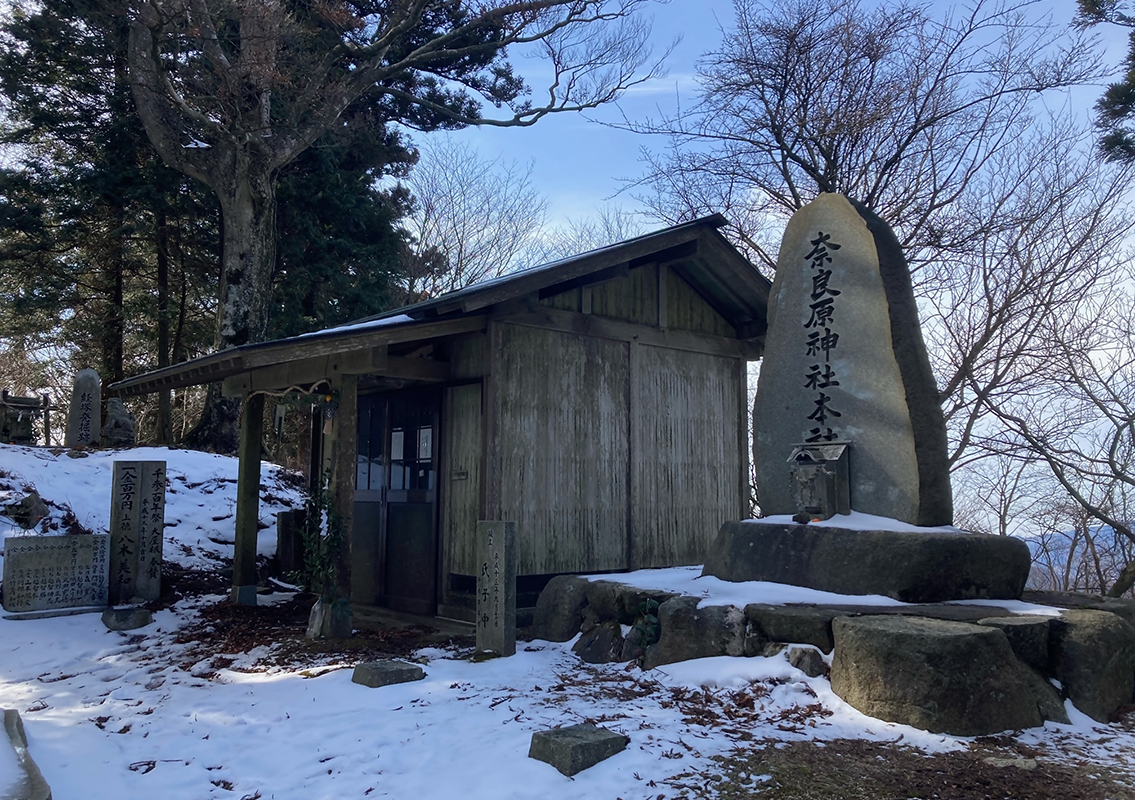 Narabara jinja (Shrine)
Narabara jinja (Shrine)The Narabara Shrine, located at the top of Mt. Narabara, was once called Narabara Gongen and was believed to be the god that protected horses and cattle. There is a legend that during the Nanbokucho period, Emperor Choukei was defeated in a war and escaped deep into Mt. Narabara on a cow. In addition, valuable relics from the Heian period, including a bronze pagoda, were discovered in the Kyozuka of Narabara Shrine and have been designated as national treasures.
-
7
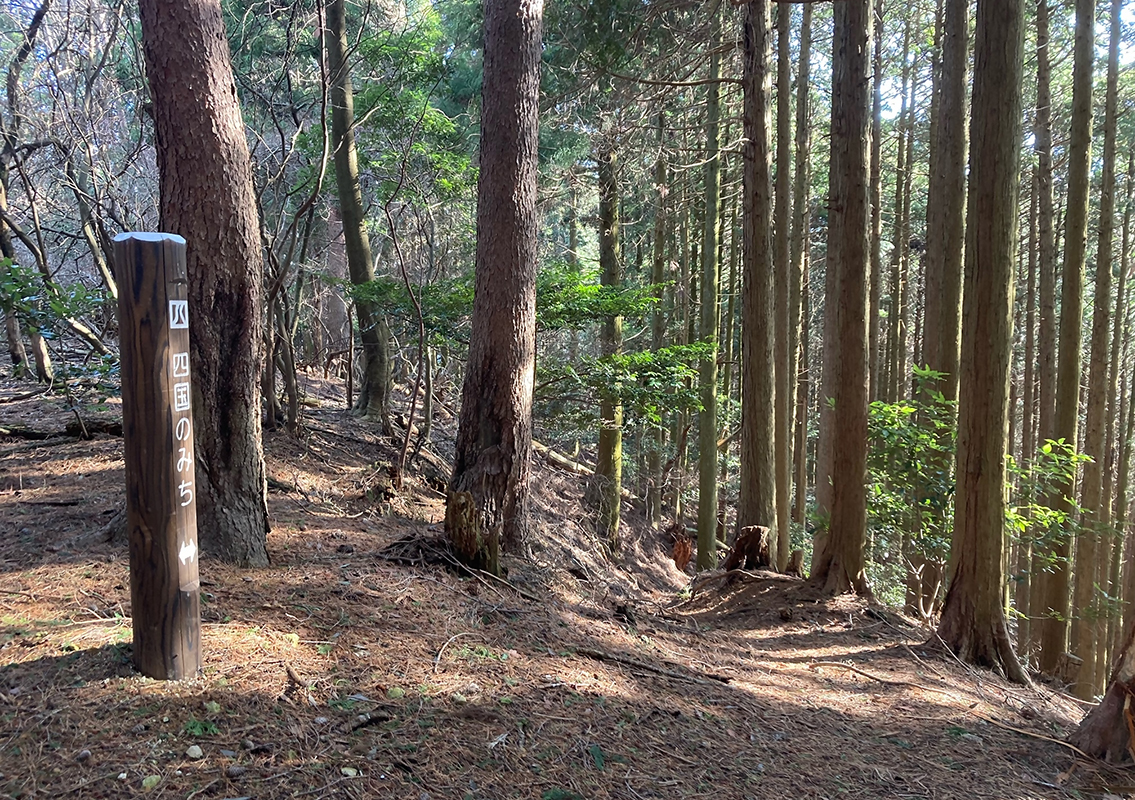 Mountain Trail (Kamikiji side)
Mountain Trail (Kamikiji side)Please note that there are no stairs on the Kamikiji mountain trail, and cedar branches have piled up on the slope, making it slippery underfoot.
-
8
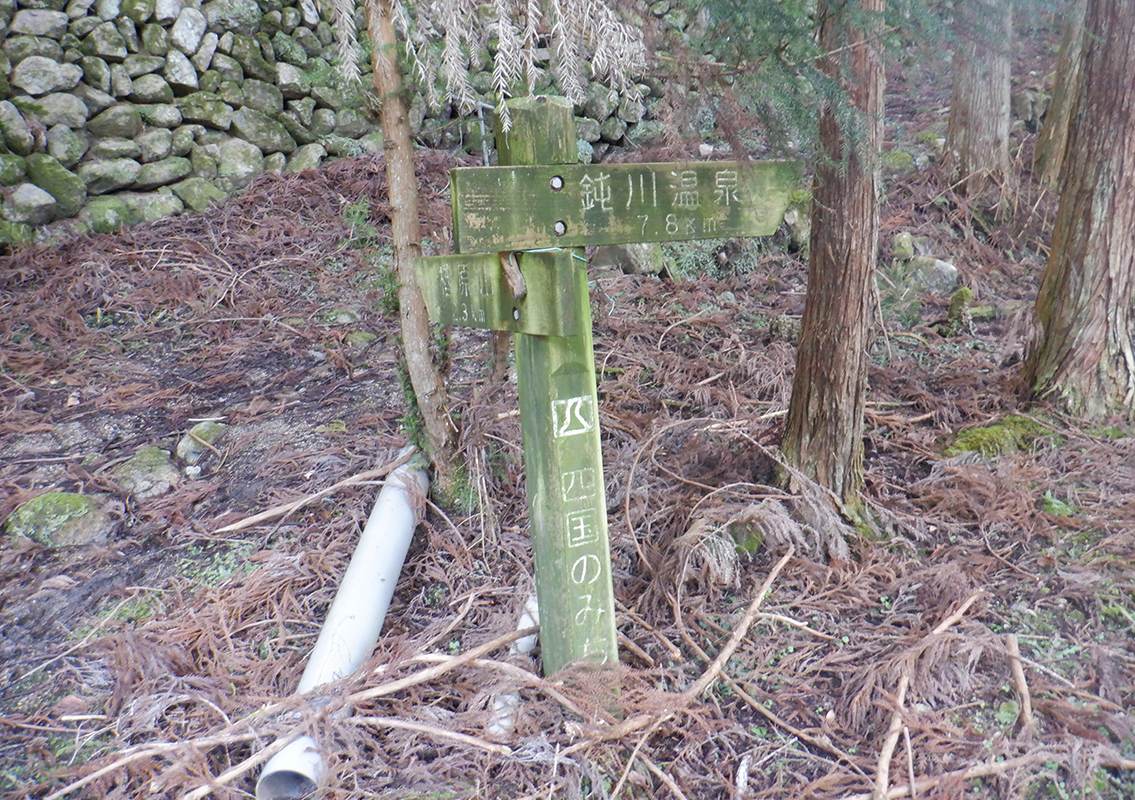 Kamikiji Trail Entrance
Kamikiji Trail EntranceThere is an information board, a stone pillar, and a sign board at the trail entrance. From here, proceed on the Imabari City Road along the Kiji River. The Kiji River is a very clear and clean stream that has been selected as one of the "100 Best Nature Spots in Ehime." The Nibukawa Onsen Village is located downstream of the river.
-
9
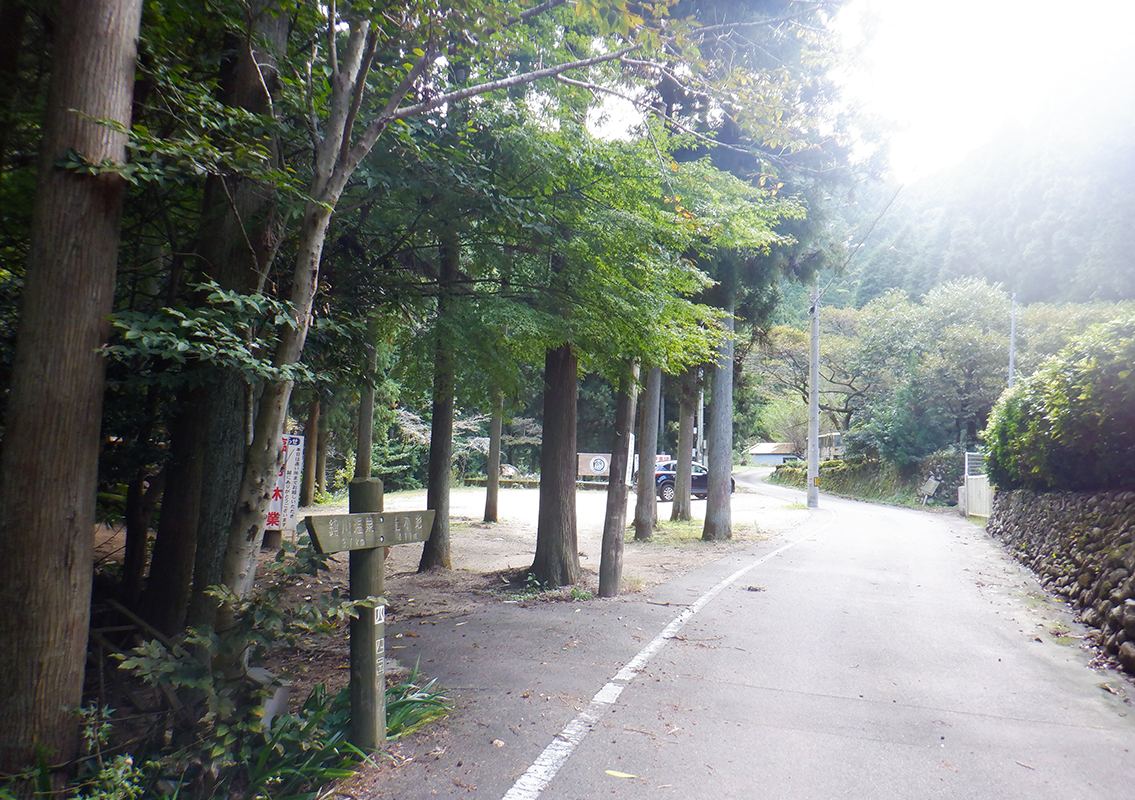 End point: Shimokiji
End point: ShimokijiYou have reached the end point of the trail, Shimokiji. The "Tsuribori Nibukawa Village" is here, a place where you can easily try your hand at river fishing. Many people visit this village in the summer because they can enjoy playing in the river.



